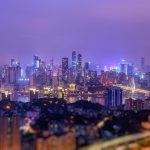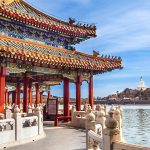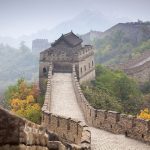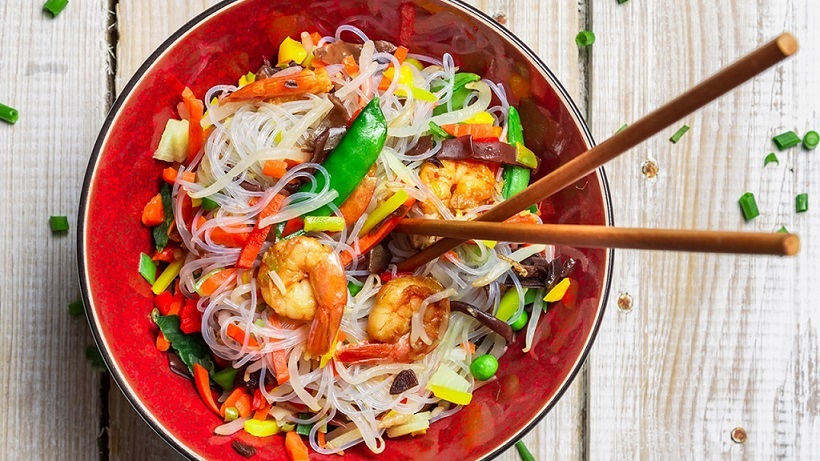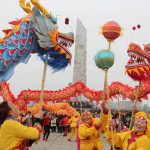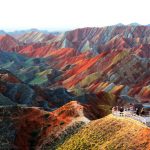China is vast. Off-the-scale massive. A riveting jumble of wildly differing dialects and climatic and topographical extremes, it’s like several different countries rolled into one. Take your pick from the tossed-salad ethnic mix of the southwest, the yak-butter-illuminated temple halls of Xiahe, a journey along the dusty Silk Road, spending the night at Everest Base Camp, or getting into your glad rags for a night on the Shanghai tiles. You’re spoilt for choice: whether you’re an urban traveller, hiker, cyclist, explorer, backpacker, irrepressible museum-goer or faddish foodie, China’s diversity is second to none.
Money
The currency used is China is known as the Chinese Yuan (CNY) or the Renminbi (RMB) or commonly known as “kwai” (“equivalent of “bucks” in the U.S.). The most common bill is 100RMB and is what is distributed by the ATMs. 100RMB bills are widely accepted even for small purchases although you may get a strange look if you buy a 2RMB bottle of water with it.
Cash is king in China. Credit cards are only accepted in hotels, larger restaurants and larger stores or malls. When making a purchase with a “foreign” credit card in a department store, you may be asked to show your passport although this now happens less. Expect to pay cash at markets, small restaurants and for taxis
ATMs are virtually everywhere. Banking is a big business in China. They provide instructions in English and accept international cards which are part of a major network such as Interac, Cirrus, Plus, Visa and MasterCard. The maximum withdraw is partly dictated by your own bank and is generally about 2500RMB. You will also find ATMs in hotel lobbies and department stores. If one ATM does not work with your card, just try another bank. Of course your own bank will probably charge you a fee but it is a small price to pay for the convenience of not having to carry a pile of cash. You cannot usually use a “foreign” debit card to make a purchase in a store. You need a Chinese card showing the “Unionpay” logo. (Discover cards should work where Unionpay cards work, but they lack the logo and it can be hard to convince the clerks to give it a try.)
Alternatively you can bring cash to China and open a bank account in any bank. You will get a bank card to withdraw funds from the card all over the country at no fee. This card can also be used to make purchases in stores and pay at restaurants
Tipping
In China, tipping is not part of the culture. In fact offering a gratuity may be considered rude as it implies that the employee is not valued by their employer.
Eating and Drinking
Eating and drinking in China can be a mind-broadening and enjoyable cultural experience. However, there are likely to be many surprises along the way. We would like to prepare you for, and even warn you of, the main differences between eating and drinking in China and in the West. (Some of the things mentioned below you will (fortunately) not experience if you don’t eat with Chinese people and stick to the largest restaurants.)
In China eating is more of a communal activity. In contrast to the West, where everyone orders their own meal, which arrives on a plate and is eaten individually, food is generally ordered dish-by-dish in China to be shared by all present at the table. Each diner has their own small rice bowl, into which food from the plates and bowls in the center of the table is placed using chopsticks, or perhaps serving spoons — a bit like a sit-down buffet perhaps.
It is common in China for everyone to use their own chopsticks for fetching food from the dishes in the center. If you would prefer, for hygiene reasons, serving spoons and serving chopsticks can be provided for food in the center of the table.
Don’t be embarrassed by using chopsticks poorly or not using them at all. The main thing is that you enjoy the food. Food is so important in Chinese culture, and the Chinese are such a practical people, that all around you will most likely be fine with whatever method you use to eat. They will be very impressed though if you can use chopsticks proficiently.
There is a lot of “Western food” in China, however much of it is “fake” or low quality “Western food”, e.g. gritty insipid hot chocolate. Chocolate, bread and milk particularly, apart from the most expensive products, often leave a lot to be desired. Keep your expectations low and look out for worldwide brands when buying. In restaurants portions are usually smaller than in the West (sometimes half an American portion).
Refrigerated soft drinks are widely available, but beware ice cubes made from tap water, as most tap water in China is unpotable and should be at least boiled before drinking.
Beer (pijiu, pronounced pee-jyoh) is very popular in China, but it is all very similar (about 3–5% alcohol), with none of the stronger or darker varieties brewed in the West. The other popular alcoholic drink is rice wine (baijiu, pronounced bye-jyoh). Beware, this can be very strong (40%+ alcohol).
In China, drinking alcohol is still mainly a male custom. Male guests are routinely offered alcohol and cigarettes at meal times (usually not breakfast). Just politely refuse if you don’t want them. An empty glass is always refilled, no matter about protests that the guest has had enough, as a mark of politeness or good will. Often a refusal has to be given three times.
Australia Government Travel Advice
The Australian Government provides up to date information on the safety of travelling to various countries, and all travellers should take note of this advice. Liberty Tours recommends that all travellers take out appropriate Travel Insurance to cover the entire duration of their absence from home. Liberty Tours can assist with obtaining Travel Insurance.
Follow this link for current official assessment:
https://www.smartraveller.gov.au/destinations/asia/china
Advice on health risks and vaccination recommendations can also be found using the same link.
Weather
In China, a vast land spanning many degrees of latitude with complicated terrain, climate varies radically. China has a variety of temperature and rainfall zones, including continental monsoon areas. In winter most areas become cold and dry, in summer hot and rainy.
Five Temperature Zones
Temperatures vary a great deal. Influenced by latitude and monsoon activities, in winter, an isotherm of zero degrees traverses the Huaihe River-Qinling Mountain-southeast Qinghai-Tibet Plateau. Areas north of the isotherm have temperatures below zero degrees and south of it, above zero. Mohe in Heilongjiang can hit an average of 30 degrees centigrade below zero, while the temperature of Sanya in Hainan Province is above 20 degrees. In summer, most of areas are above 20 degrees centigrade despite the high Qinghai-Tibet Plateau and other mountains such as Tianshan. Among these hot places, Turpan Basin in Xinjiang is the center for intense heat at 32 centigrade on average.
Cold-Temperate Zone: north part of Heilongjiang Province and Inner Mongolia (Representative city: Harbin)
Mid-Temperate Zone: Jilin, northern Xinjiang, and most of Heilongjiang, Liaoning, and Inner Mongolia (Representative cities: Beijing, Shenyang, Dalian, Urumqi, Hohhot, Dunhuang, Lanzhou)
Warm-Temperate Zone: area of the middle and lower reaches of the Yellow River, Shandong, Shanxi, Shaanxi, and Hebei Province (Representative cities: Xian, Taiyuan, Luoyang, Jinan, Qingdao, Zhengzhou)
Subtropical Zone: South of isotherm of Qinling Mountain-Huaihe River, east of Qinghai-Tibet Plateau (Representative cities: Shanghai, Guangzhou, Hong Kong, Macau, Guilin, Hangzhou, Suzhou, Kunming, Dali, Lijiang, Chengdu)
Tropical Zone: Hainan province, southern Taiwan, Guangdong, and Yunnan Province (Representative cities: Haikou, Sanya)
Plateau Climate Zone: Qinghai-Tibet Plateau (Representative city: Lhasa)
Precipitation in China is basically regular each year. From the spatial angle, the distribution shows that the rainfall is increasing from southeast to northwest, because the eastern seashores are influenced more than inland areas by the summer monsoon. In the place with the most rainfall, Huoshaoliao in Taipei, the average annual precipitation can reach over 6,000mm. The rainy seasons are mainly May to September. In some areas, especially in the dry northwest, changes in precipitation every year are greater than in the coastal area. Based on precipitation, the area divides into four parts: wet area, semi-wet area, semi-dry area and dry area.
In summer, a southeast monsoon from the western Pacific Ocean and a southwest monsoon from the equatorial Indian Ocean blow onto the Chinese mainland. These monsoons are the main cause of rainfall. Starting in April and May, the summer rainy season monsoons hit the southern provinces of Guangdong, Guangxi, and Hainan. In June, the rains blow northward, and South China gets more rainfall with the poetic name, plum-rain weather, since this is the moment when plums mellow. North part of the country greets its rainy season in July and August, says farewell in September; gradually in October the summer monsoons retreat from Chinese land. Eastern China experiences many climate changes, while the northwest area is a non-monsoon region.
What to pack
In winter: for Harbin and the north-east, the mountains and the desert, especially in the northern part (Urumqi and Dzungaria), bring cold weather clothing, synthetic thermal long underwear, a parka, a Gore-Tex jacket, gloves, a hat, and a scarf.
For the Beijing area, bring very warm clothes, such as a down jacket, gloves, a scarf, and a hat, which can be removed in the warmer days of February.
For the area of Shanghai, warm clothes, such as a sweater, a jacket, and possibly a raincoat or umbrella.
For Yunnan, in Kunming, warm clothes, such as a sweater, a jacket, a hat for colder nights, or heavier garments if you want to rise in altitude and climb mountains.
For the south, Fuzhou and Guangzhou, spring/autumn clothes, a sweater, a jacket, and a raincoat or umbrella. For Hainan, spring/autumn clothes (light for the day), a sweater, and a jacket.
In summer: for Harbin and the north-east, bring light clothing, a sweatshirt or sweater for the evening, and a raincoat or umbrella.
For the desert, light clothing, a scarf for the wind, a sweatshirt or sweater for the evening at an altitude higher than sea level and in the far north; you can add a jacket, maybe longer for the wind, above 1,000 meters (3,300 feet).
For the high mountains (Tian Shan, Pamir, Karakoram, Himalayas), a down jacket, a hat, gloves, and a scarf.
For the Beijing area, light clothes, a light raincoat or umbrella, a scarf for the wind, and a light sweatshirt for air-conditioned places.
For the area of Shanghai, the south and Hainan, bring tropics-friendly, lightweight clothes, and a light raincoat or umbrella; a light sweatshirt and a scarf for air-conditioned places.
For Yunnan, in Kunming, spring/autumn clothes (light for the day), a sweater, and a raincoat and umbrella; bring heavier clothes if you plan to climb mountains.
If you forgot to pack some clothes, you can easily find them and at low price on the spot. It’s better for women to avoid shorts and miniskirts in rural and non-tourist areas.

